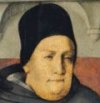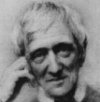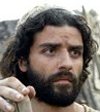
Principle 8. Opinion is only OpinionCommon Opinion in the Church with regard to scriptural or theological questions are not part of the Church's infallible teaching.
|
Interpreting Scripture correctlyLESSON eight
|
||
The ProblemThe official teaching authority of the Catholic Church in Rome maintains that the exclusion of women from the ordained ministries is part of the Church's Tradition.
However, on inspection this so-called 'firm tradition' turns out to be no more than a 'common opinion'. Let us look at some examples. |
|||
The typical theologian of the pastThomas Aquinas (1225-1274 AD), whom Rome has called the 'model for all theologians', was firmly convinced that "women are in a state of subjection to men". This is not only due to the punishment imposed on Eve after the Fall, he says but because of woman's natural inferiority.
But Thomas Aquinas' views may not be taken as a norm of real 'Tradition'. He held many wrong views. If Thomas could have a glance at a modern introduction to the Bible, for instance, surely his eyes would open wide in surprise and bewilderment.
We can imagine how the great theologian would lay down the book with blazing indignation. "These opinions", he might say, "offend pious ears! They go counter to the common teaching of the Church!" It is true that in those ages all alike, whether Popes, bishops, theologians or doctors of the Church, were unanimously of the opinion that God created the world in six days, that David himself composed all the psalms, that the story of Judith did actually happen, that Jonah was truly swallowed by a sea monster. Such ideas were commonly believed true and to be part of Christian faith. They were preached as such from the pulpit. They were taught as such in the monastic schools. Yes, they these truths were considered an inalienable part of revealed doctrine! Thomas Aquinas's mistaken idea of woman's being in a state of subjection is due to his wrong interpretation of Scripture texts such as Genesis 2,4b - 3,24. |
|||
The sacrament of confessionTheological experience of the last century has taught us to make a careful distinction between what was commonly believed to be true and what was formally preached as part of revealed doctrine after an informed examination of sacred scripture. In the first two centuries of the Church confession was normally considered a public sacrament. Sacramental absolution was, moreover, only granted once or twice in one's life. For certain grave sins, such as adultery, apostasy and murder, absolution was delayed until the moment of death. Common opinion at the time would have recoiled from "frequent confessions" such as was propagated from the 17th to the 20th century. During those centuries the Church taught how valuable confession can be as a means of sanctification. Confession not only offers public reconciliation: it can also help the penitent Christian to grow gradually to a greater likeness of the sinless Christ. This aspect of confession had not been fully discovered by the faithful of the Early Church, but it was contained implicitly in their faith concerning the sacrament. In our own time the ordinary faithful seem to be reacting against the excesses of frequent confession. The point in considering this historical survey is to discern that the common opinion of a particular era does not express unchangeable Tradition. |
|||
Taking interest for loansOr consider the matter of taking interest for loans. We may judge this the most natural thing in the world, but not so the Church of the Middle Ages. The Old Law of Moses strictly forbade taking interest from Jewish nationals (Exodus 22,25; Deuteronomy 23,20-21; Ezechiel 18,8.13) and this law was interpreted very severely by scholastic theologians. Many a Pope condemned all taking of interest as usury. The Second Council of the Lateran (1139 AD) prescribed that persons who take interest "be not admitted to the sacraments". And: "in case they do not retract their error, they should be refused an ecclesiastical burial."
Growing insight regarding the true nature of Church's law of justice made the authorities modify their stand. Since capital is, after all, a productive agent in our economic setup, a just percentage of interest may be demanded. Do we not lease cattle or farm lands for a share in the produce? Taking rent for money amounts to claiming a share in milk produced by your cow. Exploiting others by usury remains condemned as before. This again is an instance of how the Church learned to see the distinction between a common opinion of former ages ("no interest at all") and the true nature of her teaching ("no usury"). |
|
||
SaintsUntil the liturgical reforms by the Second Vatican Council, St. Leo the Second, St. Philomena and St. George were commonly considered saints. Their feasts ranked in the official liturgical calendar for centuries. Masses were celebrated in their honour. Boys and girls were named after them at baptism. They were made patrons of churches, of associations and even of countries. In spite of all this devotion the Congregation of the Sacred Rites decided to cancel these saints from the liturgical lists. Why? Because it was found that even the very existence of these saints can reasonably be doubted.
The Church was right, therefore, when she dropped the public veneration of these saints in spite of the 'common opinion' of former Catholics. In doing so she did not change her teaching, but merely corrected that 'common opinion'. For these two do not coincide! |
Information about St Philomena's life was based on presumed 'revelations' by Philomena herself to Sister Maria Luisa of Jesus, her fervent devotee, on August 3, 1833 |
||
ExerciseWhen Galileo Galilei, around 1610, began to publish his finding that it is the earth that goes round the sun, and not vice versa, Church authorities opposed him. They claimed that Sacred Scripture teaches that the sun goes round the earth. These were their main texts:
The religious authorities of his day, the Pope and the chief theologians, stuck to a literal understanding of the Bible and refused to accept the evidence that Galileo had collected through his scientific observations. They also pointed out that the belief about the sun moving round the earth had been firmly held by all previous generations of believers. As a result, his views were condemned and he was treated as an unbeliever. On February 24, 1616 Galileo’s scientific views were condemned by a special commission of theologians at Rome, the centre of the Roman Catholic Church. He was forbidden to “hold, teach or defend his opinion in any way, either verbally or in writing.” On February 24, 1633 Galileo was again summoned to an ecclesiastical court in Rome. He was found guilty of ‘heresy’. He was made to kneel down and abjure his opinion. Until his death, in 1642, he was kept under house arrest.
Galileo’s conflict became the best known example of the clash between scientific research and religious authority. Try to work out these questions:
After working on this, readmore information on Galileo Galilei here . |
|
||
ConclusionsFormer centuries may have been convinced that Moses wrote the Pentateuch, or that God created the world in precisely six days. Such convictions may even have represented the universal and common opinion in the Church. Yet, as new information became available and new understanding grew, the Church could quietly lay off such opinions without impairing her unchangeable doctrine. 'Common opinion' does not automatically brand a belief to be Church doctrine! This is the big lesson of contemporary theology and it should be kept in mind when judging sacred scripture. Church doctrine is contained in the direct or indirect teaching of Scripture and genuine Tradition which only finds expression in the considered and informed statements of Church authority. 'Common opinion' of past centuries was often mistaken, one-sided or based on ignorance, and so has been clearly proved not to be commensurate with the Church's official teaching. It will not do, therefore, to appeal to such 'common opinion' of ages gone by when discussing modern scripture questions. At one time 'common opinion', also in the Church, held the earth to be flat and the sun to move round it! And yet, which of us will give up our making use of satellite technology for TV and mobile phones, or cancel a "round-the-world" trip on account of it! John Wijngaards |
|
||
Go to the next lesson: Problems will remain. They need not upset us. |
course overview | ||
CreditsThe texts in our course Interpreting Scripture Correctly were written by John Wijngaards in 2009. Part of the contents is based on his earlier publications, in particular:
Illustrations in the video clip by Jackie Clackson. |
 |
 |
 |
 |
 |
|
|---|---|---|---|---|---|
| Facts |
 |
 |
 |
 |
|||